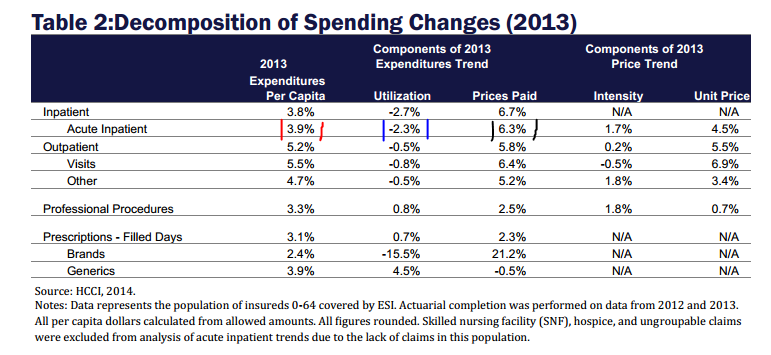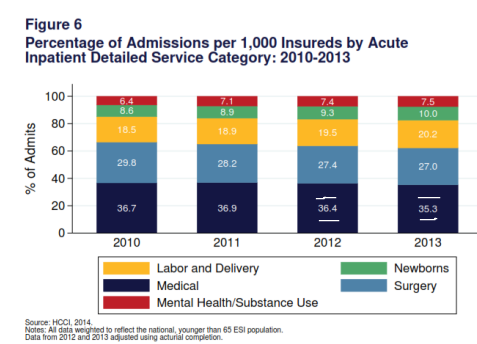The Health Care Cost Institute is not just another consulting firm or think tank. They are a a non-partisan, non-profit clearinghouse for all things health care payment. They obtain commercial and government data and generate reports on health spending direction.
Their 2014 release analyzing 2013 commercial trends (think age 18-64 yo) came out last week. The report has oodles of data and fun graphics covering many domains–but since we live on the inpatient side, you might also want to take a look at the hospital end of things. After all, hospital bottom lines live and die by employer sponsored insurance and the rates they pay (or hospitals accept).
The verdict? Inpatient use down, with care intensity and prices up (average price of a stay equals ~$18K).
Have a look (page 7 of the report):
In addition, medical and surgery as a fraction of admits have dropped year over year. Utilization per 1000 for acute inpatient care has fallen to 58:
Hospitals can continue to drive up intensity of care and prices for only so long. WIth employers, and by proxy, employees pushing back, we can deduce the volume trend will not be our friend. Expect more of the same the next few years. Probably fitting, and a bonus, if you have a look at the number one class of generic rx prescribed for both men and women age 26-44 yo, you won’t be surprised to find, yup, antidepressants.




Leave A Comment